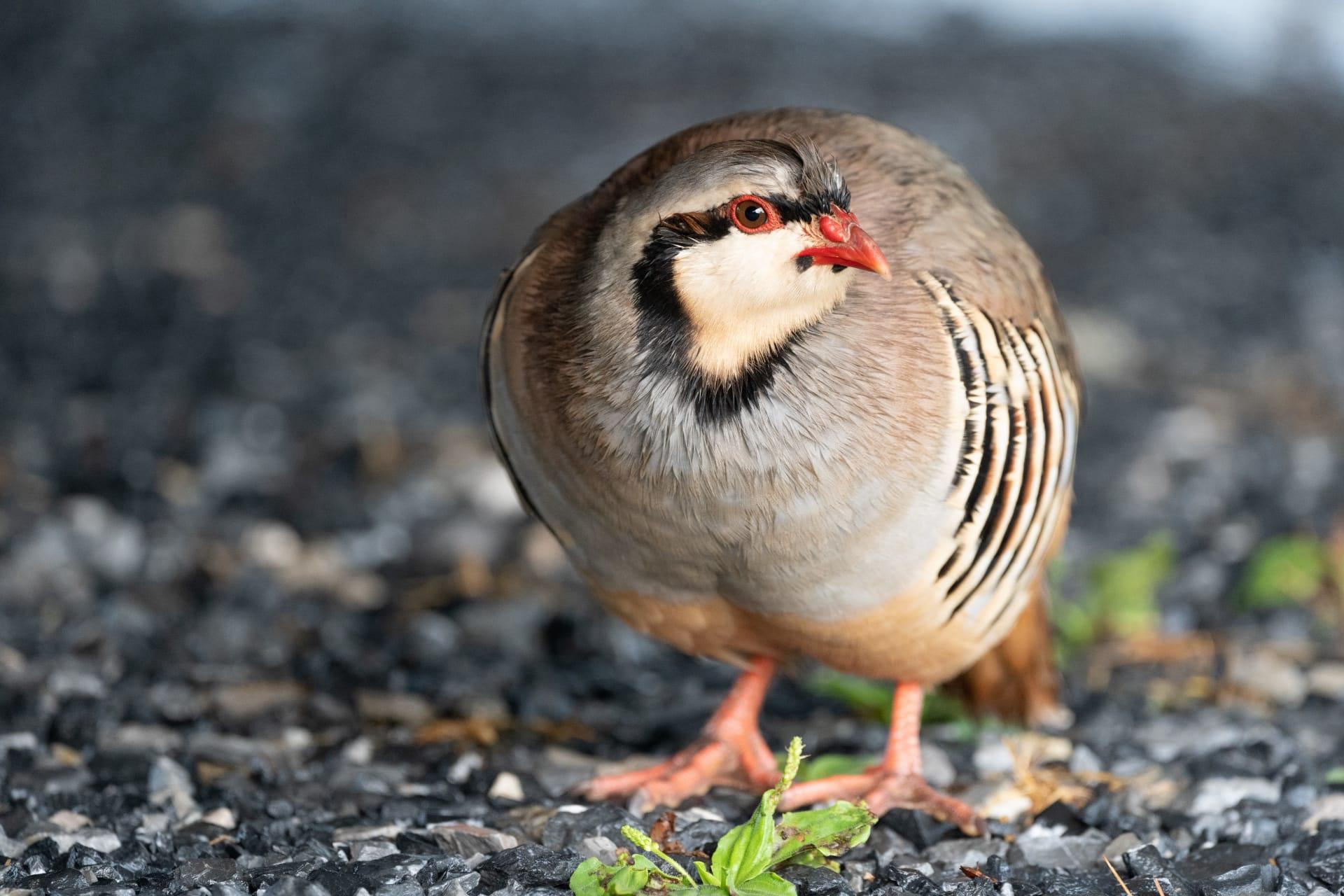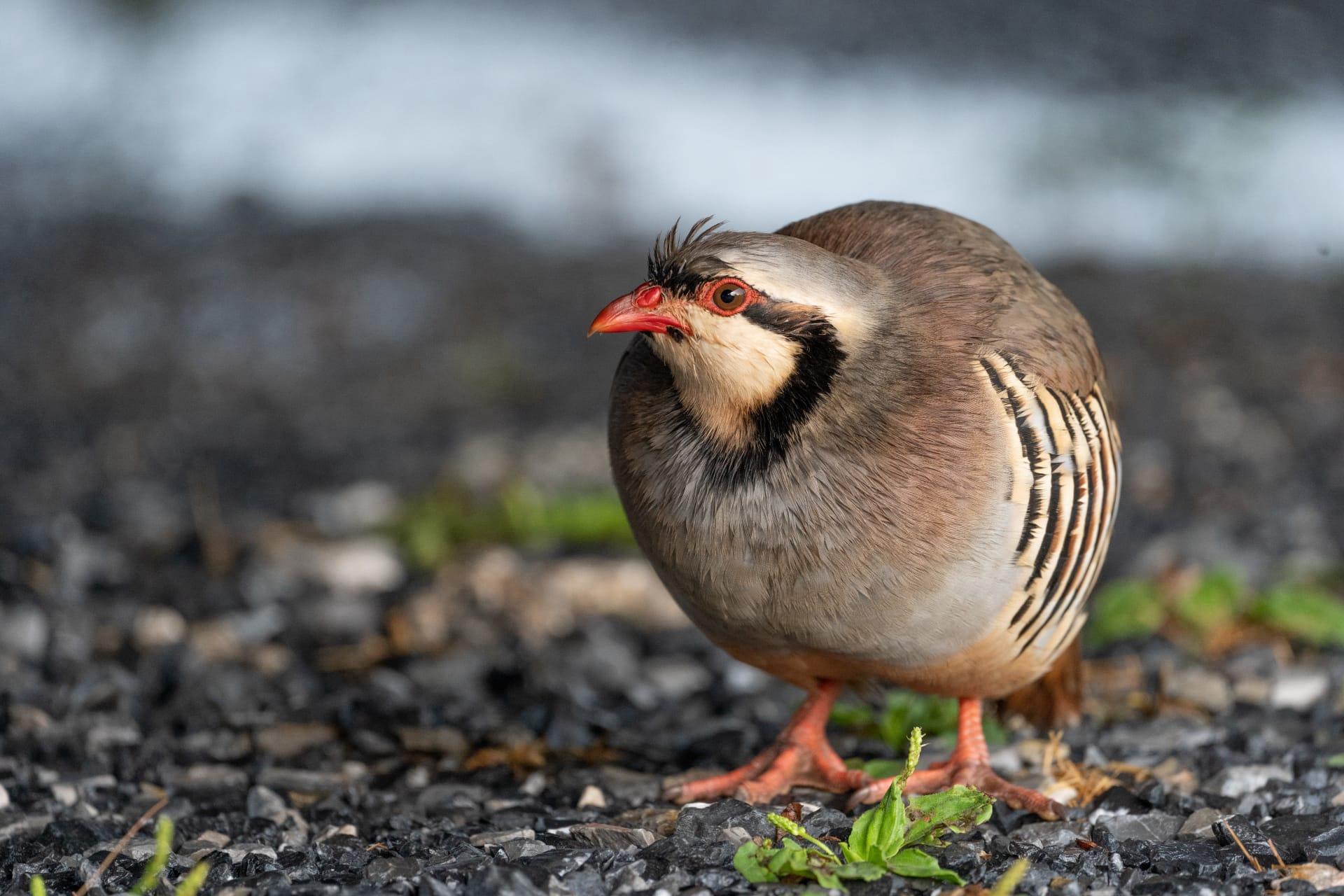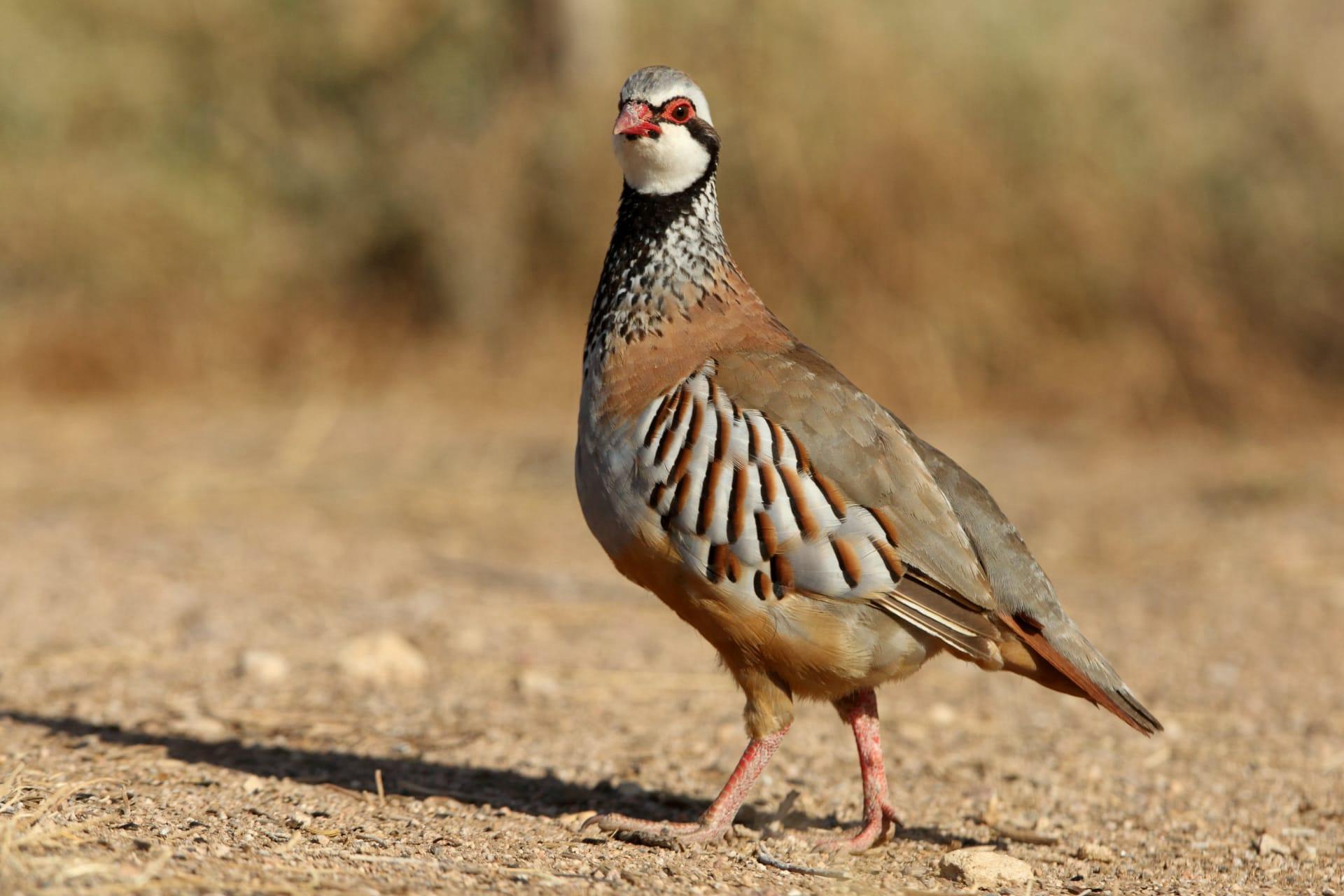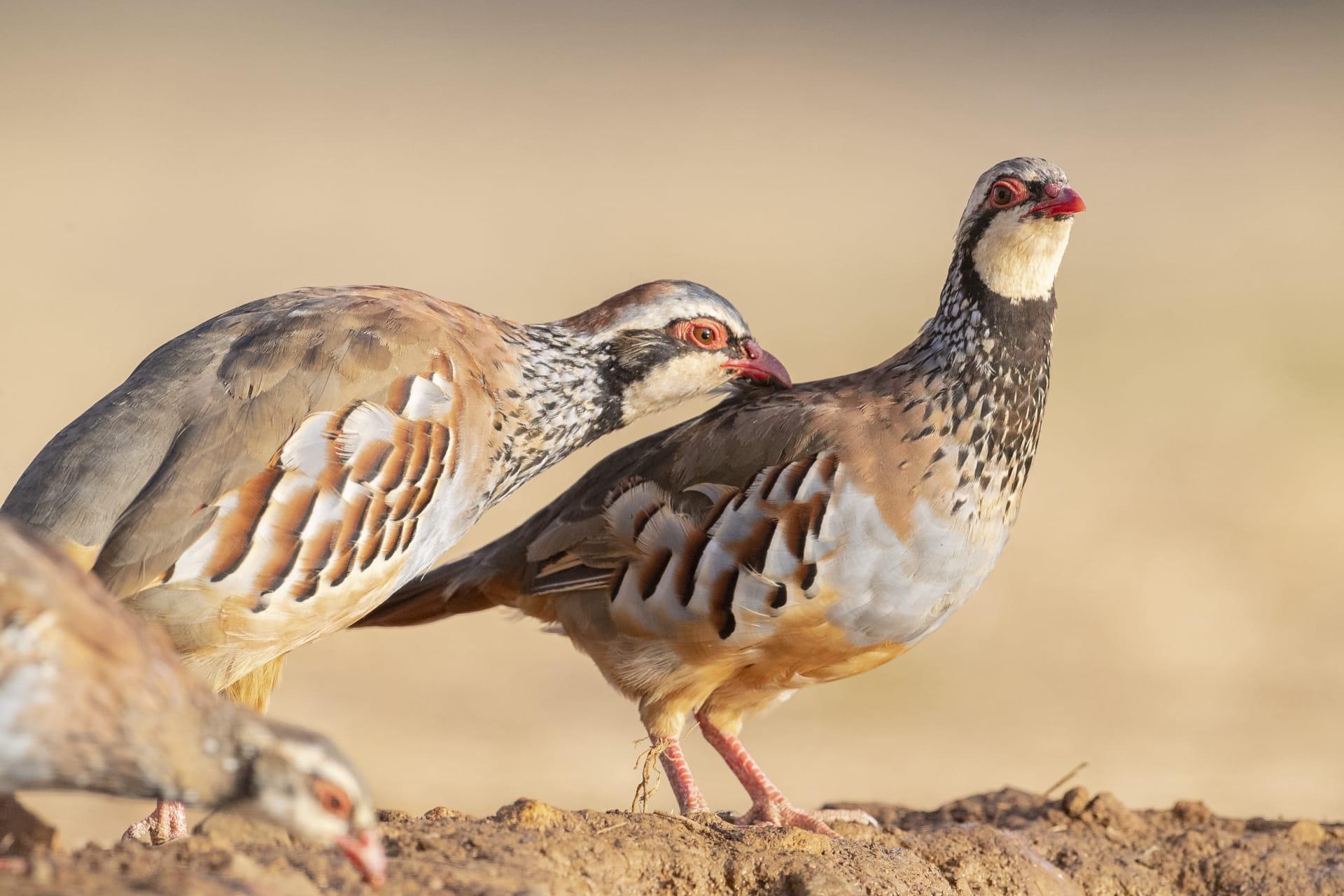Partridge
- Home /
- Mini Encyclopedia /
- Animal /
- Partridge
1
Partridges, members of the Phasianidae family, are a group of medium-sized ground birds. They belong to several genera within the family, including Perdix, Alectoris, and Arborophila. These birds are characterized by short legs, wide tails, and strong flight muscles. The Grey Partridge (Perdix perdix), native to Europe and parts of Asia, is a prime example, showcasing a grey-brown body with a distinct horseshoe mark on the chest.
Partridges are found in a variety of habitats across Europe, Asia, and Africa. Their distribution extends from the Iberian Peninsula in the west to Japan in the east, and from Scandinavia in the north to the Sahara in the south. They inhabit farmlands, grasslands, and mountainous regions, adapting well to different environmental conditions. The Chukar Partridge (Alectoris chukar), for instance, is prevalent in rocky, arid areas of the Middle East and Asia.

2
Question: Do partridges actually 'fly' in pear trees during Christmas, as popularly believed due to the song "The Twelve Days of Christmas"?
Answer: The belief that partridges perch in pear trees is largely a myth stemming from the Christmas carol. Partridges are ground birds that prefer running to flying. They are more likely to be found walking along the ground or in low bushes. Their flight is typically short and rapid, used primarily as a means of escape rather than for perching in trees.

3
Partridges employ several survival strategies. One of their primary tactics is their cryptic coloration, which helps them blend into their surroundings, making them less visible to predators. They are also known for their 'freeze' behavior, remaining motionless to avoid detection. In addition to these passive strategies, partridges have strong legs for quick running, often their first response to danger before resorting to flight.
During breeding season, partridges display unique behaviors to protect their nests. They lay eggs in simple ground nests, which are difficult to spot. The female may perform a 'distraction display' to lure predators away from the nest. This involves feigning injury to draw attention to herself, then flying away at the last moment.

4
In the ecosystem, partridges play a role as both prey and seed dispersers. As a food source, they support various predators, including foxes, hawks, and snakes. This predation helps maintain a balance in the animal populations of their habitats.
As seed eaters, partridges contribute to the dispersal of plant species. They consume seeds and grains, which pass through their digestive systems unharmed. This process aids in the propagation of various plant species, influencing the composition of their habitats.

5
Film: "The Secret Life of the Partridge" is a British documentary released in 2016. It explores the life cycle of the Grey Partridge, focusing on its behavior, habitat, and challenges in the wild. The documentary highlights conservation efforts and the impact of agriculture on their populations.
Book: "Partridges: Countryside Barometer" by Dr. Peter R. Thompson, published in the UK in 2011, offers an in-depth look at the ecology and conservation of the Grey Partridge. It discusses the species' role as an indicator of rural environmental health and explores the decline in their populations.
Book: "The Partridge Family: Life and Survival" by Sarah Jenkins, published in the United States in 2018, delves into the social structure and survival tactics of various partridge species. It provides a comprehensive overview of their life in different habitats and the threats they face.